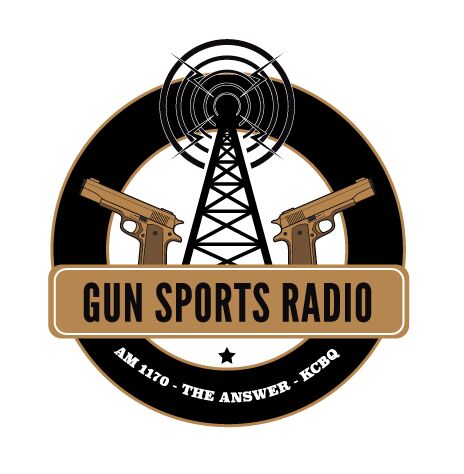The precision rifle community is continually looking for improvements. This isn’t stock racing, this is formula cars and sports prototypes. Every piece of the rifle is picked over for added performance, decreased time during use, smoother function, lower recoil and better ballistics. Which brings us to the 6mm.
Some brief history on the last 10 years of precision rifle matches is in order. Ten years ago, the 6.5 Creedmoor was the newest kid on the block. Meanwhile, the 6.5s were starting to catch on and the .308 Winchester still made up most of the field at matches. Today the .308 has its own class. Meanhile, the 6.5s are for those concerned about barrel life and the 6mm lineup is ever more crowded. Wildcats upon wildcats are more prevalent. There seems to be a new caliber of the month quite literally every month.
The 6mm Spectrum
This article’s aim is to give readers a broad-strokes introduction to the world of the 6mm competition cartridges. We’ll discuss the six 6s that comprise the majority of the performance spectrum, from the 6mm Bench Rest and its wildcats to the 6mmx47 Lapua case, Creedmoor and the granddaddy of the bunch: the .243 Winchester.
Starting from the largest and working backward gives us a benchmark of performance as well as some history. So, we’ll start at the .243 Winchester.
Good Ol’ .243
The .243 is based on a .308 Winchester parent case necked down to hold 6mm bullets. It holds about 45 grains of powder, depending on powder type, and it’s extremely flat shooting. The recoil is low, brass is easily available from many sources including Lapua, Hornady, Winchester, Remington and numerous others. Back when the 6.5 Creedmoor was just starting to show up, this cartridge was already a well-known competitor and hunter’s caliber. It is exceptional for deer hunting in open country and is highly accurate.
However, there are some significant drawbacks to the cartridge. The shoulder angle is shallow (20-degree half angle), and it has a relatively short neck. Coupled with the large case capacity, it is a well-known barrel burner. It sometimes yields competition shooters under 1,000 rounds and rarely more than 1,500 rounds of competition-grade barrel life.
But it is fast, flat, accurate and easy to load. With appropriate barrel twist rates for the modern 6mm bullets, the cartridge is extremely effective on deer-sized game past 800 yards; the same goes for target shooting to 1,200 and beyond. Load data in books tends to be pretty conservative. However, with new, high-BC bullets and the near-magical properties of powders like RL26 and N560, shooters are seeing performance that was previously unheard of without a 6mm-284 or 6mm-06 wildcat.
6mm Creedmoor
The next case is what behaves like a modernized .243 Winchester—the 6mm Creedmoor. The useful case capacities are similar and the internal ballistics are pretty similar when loaded to the same pressure and using the same powders. I’ve seen several rifles shooting 115-grain bullets over 3,200 fps with cases stuffed up on RL26. However, the barrel life was pretty short. More reasonable barrel life comes with cases shooting 105- to 110-class bullets around 3,100 fps. Lifetimes of 1,400 to 1,800 rounds are not unreasonable.
The cartridge is shorter overall than a .243, but with a sharper, 30-degree shoulder, longer neck and typically longer freebore lengths in the chamber, the powder charges are very similar as are the velocities. Excellent factory ammunition is available from several companies that are easily match grade. Hornady, Federal and Prime Ammunition all offer several flavors of match bullets that are sub-MOA capable at 1,000-yard distances.
Today’s Variants
Those are at the bigger end of the 6mm flavors—the stuff that was more popular in 2015 than in 2018 and 2020. Today, we see a massive resurgence of the venerable 6mm BR and its children. The fastest-growing caliber in the Precision Rifle Series in 2017 and 2018 was the 6mm Dasher, a wildcat based off the 6mm BR.
There are a few considerations that these little calibers really struggle with though, namely ejection and smooth feeding. The cases are very short, with trim lengths around 1.55 inches, approximately 0.5 inches shorter than a Creedmoor or .243 Winchester. This puts some interesting demands on the magazine systems and the ejectors of bolt-action rifles.
Several companies in these markets have specialized in making adapter kits for magazines and rifle actions with inertial ejectors (aka, mechanical ejectors like a Mauser) so that the bolt-action receivers made for things like .308 will work well for 6mm BR, BR-Ackley, BRX, Dasher, etc. The speed that these cases bring to the table seems like it might be a detriment when compared to the bigger cases like the .243 and 6mm Creedmoor, but what they lack in speed they handily make up in single-digit SD variation, inherent accuracy, long barrel life and exceptionally low recoil. These benefits are what really draw the top competitors to such cases.
6 BR-A & 6 Dasher
The repeatability at long range with high-BC match bullets is exceptional, especially with the latest developments in monolithic solids and computerized reloading scales. Shooters are regularly seeing reload performance with both ES and SD in single digits; many times with SDs are below 4 fps on 10-shot strings. The 6 BR is a long-neck cartridge with 30-degree shoulder and is known for legendary accuracy even at 1,000 yards.
The BR-Ackley is a simple Ackley Improved variant with a little less body taper and a 40-degree shoulder, but it retains the same neck length as the 6 BR. Performance is about 50 fps faster than the regular 6 BR on average with all bullet weights. The Dasher is a full-on AI variant with a shortened neck, reduced body taper, and 40-degree shoulder. It also has a lengthened powder column that is typically 100 fps faster than the parent BR case and demonstrates very good barrel life for a 6mm competition cartridge. It’s capable of meeting that 2,950- to 3,000-fps threshold with 105-grain bullets that many competitors seek. Barrel life is typically around 2,500 rounds.
Considering the relatively small performance difference between the 6 BR-A and the 6 Dasher, we will limit the tabular performance comparisons to the 6BR and Dasher only for brevity. Brass is readily available for the 6mm BR from several companies. Some are even making turn-key 6 Dasher brass now to allow shooters to skip fire forming.
6mmx47 Lapua
Now, let’s look at the middle ground made up by the 6mmx47 Lapua. It is about 0.25 inches shorter than the .243 and 0.25 inches longer than the 6mm BR case. It has about the same performance average, as well. Where the 6mm BR is a 2,850-fps performer for 3,000 to 3,500 rounds using 105-grain bullets, the 6mm Creedmoor-sized cases are around 3,100 to 3,150 fps for 1,500 rounds and the Dasher is 3,000 fps for 2,200 to 2,500 rounds.
We have a middle child here that is an easily formed wildcat off the 6.5×47 Lapua parent case. It’s very accurate, nearly as much so as the 6mm BR and variants. It has a 30-degree shoulder and long neck like the BR does. Lastly, it gains the benefit of feeding and ejecting without any special considerations for the magazine and receiver parts.
6mm ARC
The latest 6mm variation to cause a stir in the tactical/practical shooting competition world (PRS-style matches) is the 6mm ARC (Advanced Rifle Cartridge) from Hornady. The cartridge is a diminutive variant based on the 6.5 Grendel case, so is pretty much a SAAMI-approved 6mm Grendel. The original design was for precision semi-auto platforms such as the AR-15. However, that has not stopped bolt-action shooters from immediately looking to experiment with it.
The cartridge holds nearly as much powder as the 6mm BR. Also, the performance is very similar with factory Hornady ammo shooting 108-grain ELD-M bullets in the 2,800-fps range. It has a distinct benefit, especially for the casual shooter, varminter and non-reloader—good factory ammo.
I’ve been experimenting with the new caliber in both factory ammo and handloads. I’ve seen impressive results from such a small case. It does suffer similar magazine issues as the 6mm BR in some rifle actions. However, as shooters have come to accept the modifications necessary to use 6 BR variants, my strong suspicion is that the 6mm ARC will become well accepted soon enough in the bolt-action community. It’s also a perfect little case for the next ultra-hot .22 centerfire wildcat for long-range predator and varmint hunting.
Performance & Wind Calls
The accompanying table of performance is based on my personal rifle barrels in the various calibers. These are generally an average over several barrels. The lone exception is the .243 Winchester, of which I only own one example. The 6mm ARC is too new to have an accurate idea of barrel life, but it will be at least as good as the 6mm BR.
By










